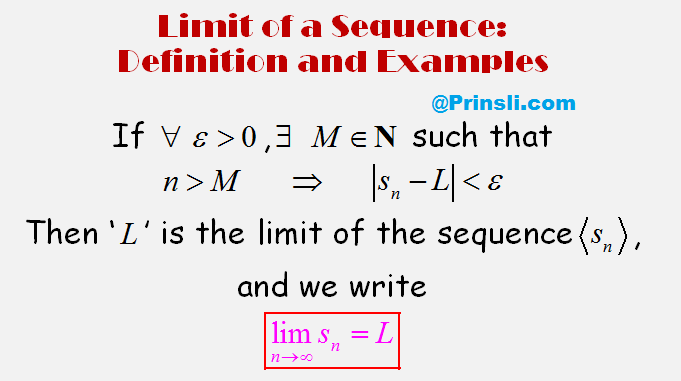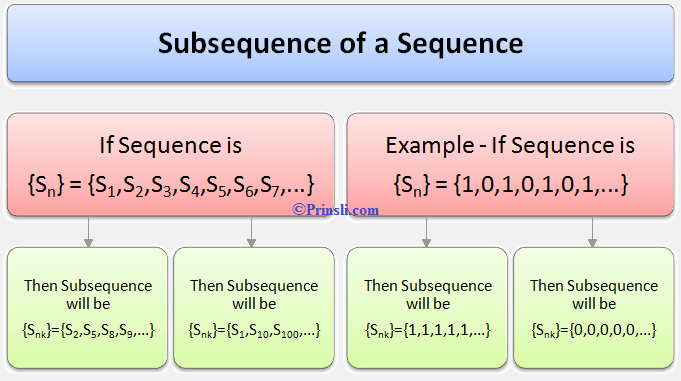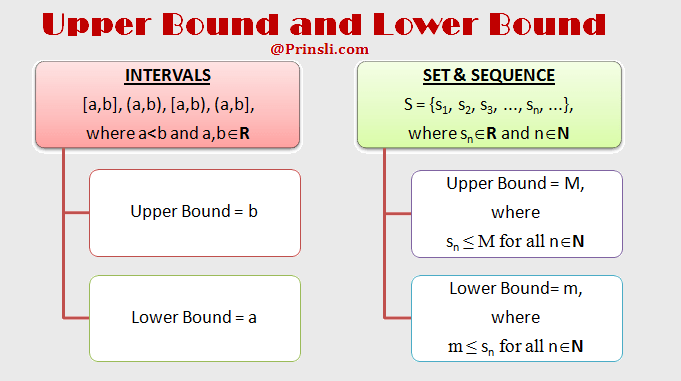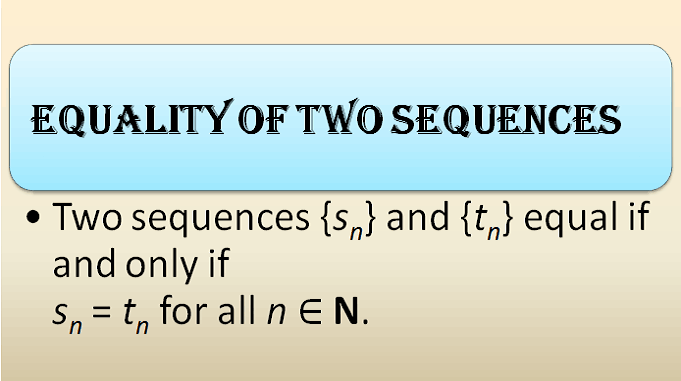
Limit of a Sequence:
If a sequence {} tends to a limit
, then we say that
is the limit of a sequence {
}, and write
.
In other words,
“A real number is the limit of a sequence {
}, if for every
, there exists a positive integer
(or
N) such that,
implies that
.”
The number
is called the limit of the sequence {
}, and we write,
as
, or
, or simply,
.
Precise Definition of a Limit of a Sequence at Infinity –
“If for every , there exists a positive integer
(or
N) such that
implies that
,
then the number is called the limit of the sequence
, and we write,
, or simply,
.”
(Note: When it is said that this sequence has a limit, it means that the limit is unique, that is, a finite and definite real number.)
Limit of a Sequence Examples:
Example 1:
Show that the sequence {} has the limit 0.
Proof:
Here, , and
.
In this example, we have to show that the sequence {} has the limit 0, that is,
.
To prove this limit: ; we consider
, and show that there exists a positive integer
such that,
implies that
, that is,
implies that
.
To show this, we must find a positive integer such that
implies that,
, or
, or
, or
, or
.
Hence, if we take , then for every
, there is a positive integer
such that
implies that
.
Therefore, , or the sequence {
} has the limit 0.
Example 2:
If , where c is a real number, prove that
.
Proof:
Here, , and
.
To prove this limit: ; we consider
, and show that there exists a positive integer
such that,
implies that
.
Now, given, , we must find a positive integer
such that
implies that,
, or
, or
, or
.
Hence, if we take , then for all
, we have
.
Therefore, , or the sequence
has the limit
.
Example 3:
Use the definition of the limit of a sequence to show that the sequence where,
,
has the limit 3.
Proof:
Here, , and
.
In this example, we have to show that the sequence has the limit 3, that is,
.
To prove this limit, we consider , and show that there exists a positive integer
such that,
implies that
, that is,
implies that
.
To show this, we must find a positive integer such that,
, …… (1)
for all .
This inequality (1) is equivalent to
. …… (2)
Now,
,
then inequality (2) will hold if,
.
Hence, if we take , then for every
, there is a positive integer
such that
implies that
.
Therefore, , or the sequence
where
has the limit 3.
Tags: define the limit of the sequences, how to find limit, finding limits of sequences
Copyrighted Material © 2019 - 2024 Prinsli.com - All rights reserved
All content on this website is copyrighted. It is prohibited to copy, publish or distribute the content and images of this website through any website, book, newspaper, software, videos, YouTube Channel or any other medium without written permission. You are not authorized to alter, obscure or remove any proprietary information, copyright or logo from this Website in any way. If any of these rules are violated, it will be strongly protested and legal action will be taken.





Be the first to comment